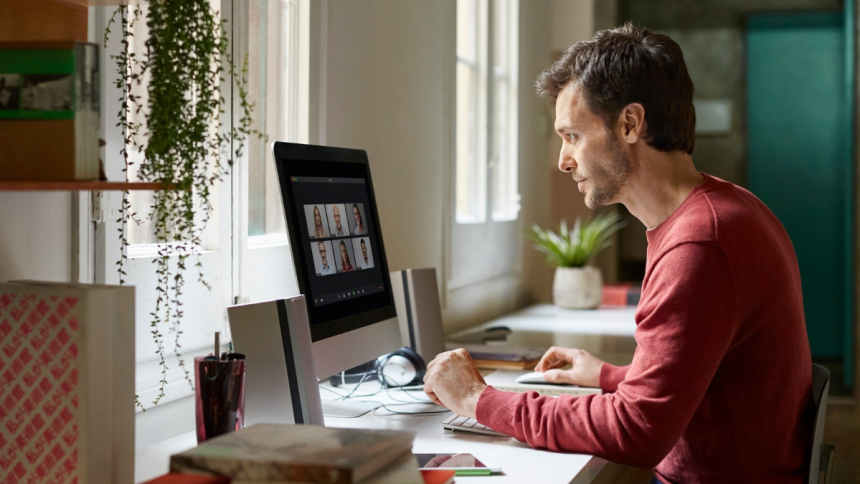If you’re building a business from home, chances are your environment is doing more than just hosting your laptop. It’s setting the tone for your creativity, productivity, and peace of mind. The ideal home workspace for a creative entrepreneur isn’t just functional—it reflects who you are, what you do, and how you do it. Whether you’re a content creator, designer, strategist, or hybrid everything-all-at-once, the way you structure your space has a real impact on your ability to focus, recharge, and grow.
This guide breaks the process into different parts, starting with what’s going on in your head before you even pick up a tape measure.
Develop Your Mindset to Help you, not Hold you Back
Let’s start with the part that doesn’t come from an office supply store. Every great home workspace begins with an entrepreneurial mindset—the ability to adapt, stay focused, and keep moving forward even when things feel scattered. Cultivating daily habits like discipline, reflection, and creativity will shape not just how you work, but how you build your work environment.
Without the right mental framework, no amount of aesthetic lighting or custom shelving will fix your productivity blocks. A good workspace supports your discipline, but it doesn’t replace it. That means setting clear boundaries for work hours, minimizing distractions, and creating visual cues that tell your brain: this is where the work gets done. It also means recognizing when to shift modes—from planning to executing, from grinding to resting—so your space always serves your bigger goals.
Décor can be Functional and Inspiring
This might surprise you, but guitars and similar instruments have earned their place as both a design element and a mental reset tool for creative entrepreneurs. Hanging one on the wall or propping it up in a corner isn’t just a style choice—it’s a signal to yourself that hobbies matter, creativity is welcome here, and it’s okay to step away from the desk now and then.
The great thing about guitars is that they blend form and function. They add a personal touch to a workspace while offering a practical outlet for breaks that recharge your brain. Playing for just a few minutes can help you reset your focus, boost your mood, and even unlock a solution to whatever problem was clogging up your to-do list. And from a design standpoint, they bring texture and personality into a space that might otherwise feel stiff or too utilitarian. If music isn’t your thing, the idea still holds: having objects in your workspace that double as tools and inspiration creates a better balance between hustle and creativity.
Stop Forcing Your Setup to Fit the Wrong Room
One of the biggest mistakes home-based entrepreneurs make is trying to squeeze a workspace into a room that isn’t set up for it. If your “office” is a tiny corner of your kitchen or the end of your dining room table, chances are your productivity is competing with noise, clutter, and constant interruptions.
The fix isn’t necessarily moving into a bigger house. It’s about making better use of the space you do have. That might mean rearranging furniture, using room dividers to define a work zone, or repurposing a guest room that gets used once a year. The point is to claim a space with intention. Even a small area can function like a true office when it’s organized around how you work best.
Get Tech to Actually Support How You Work
You don’t need a tricked-out tech setup with four monitors and a color-coded lighting scheme, but you do need tools that don’t slow you down. That starts with the basics: a fast, reliable computer, high-speed internet, and any specialized software or hardware you use regularly. But beyond that, take time to evaluate what’s helping and what’s just clutter.
If you’re always unplugging and replugging cords, a docking station might make a huge difference. If you spend time editing video, designing visuals, or working with large files, consider a larger monitor. If you run your business on calls and meetings, then your microphone, camera, and lighting should reflect that.
Have Systems to Stay Focused Without Burning Out
Creativity doesn’t thrive under stress, and work from home can easily blur the line between productivity and overwork. A smart workspace supports systems that help you stay on task without running yourself into the ground.
That starts with routines. Having a clear start and end to your workday—even if your commute is just ten feet—makes a difference. Use lighting, background music, or scent to signal when it’s time to work or when you’re off the clock. Have a place for everything: your notebooks, cords, receipts, and post-its shouldn’t live in a pile. The less mental energy you spend searching or resetting, the more energy you have for actual work.
And don’t ignore breaks. The most successful home-based entrepreneurs don’t power through the day without pause. They take intentional breaks to move, eat, step outside, or pick up the guitar sitting by their desk.
Lynn Martelli is an editor at Readability. She received her MFA in Creative Writing from Antioch University and has worked as an editor for over 10 years. Lynn has edited a wide variety of books, including fiction, non-fiction, memoirs, and more. In her free time, Lynn enjoys reading, writing, and spending time with her family and friends.















